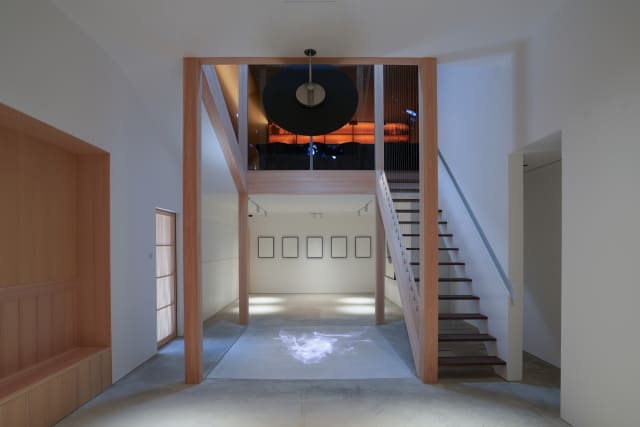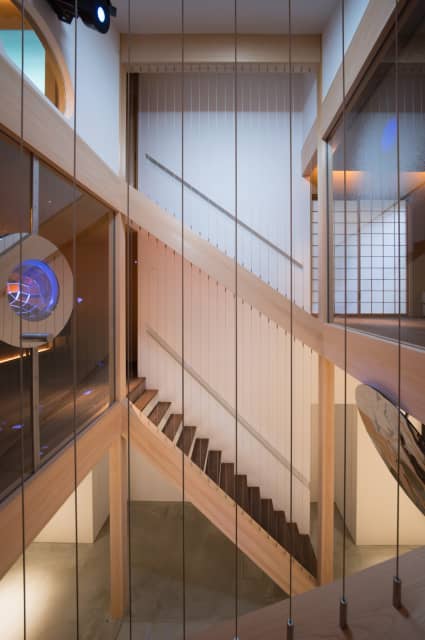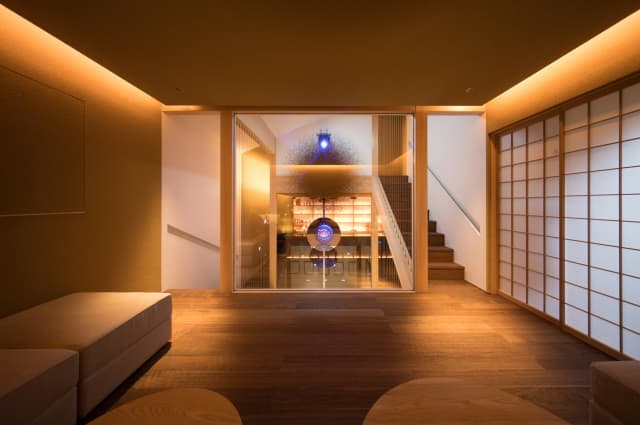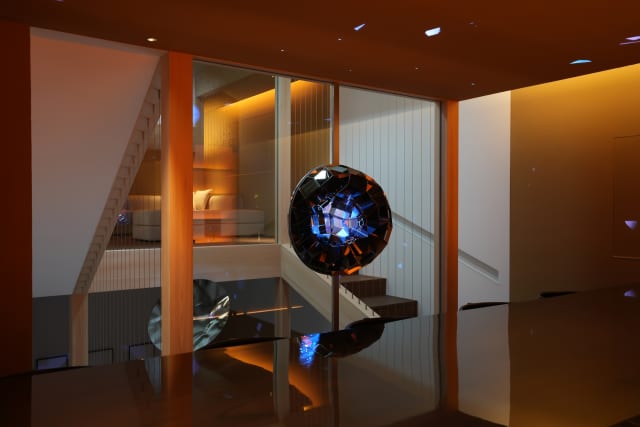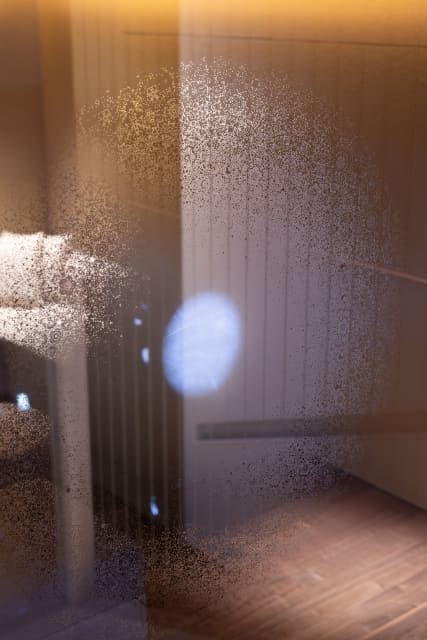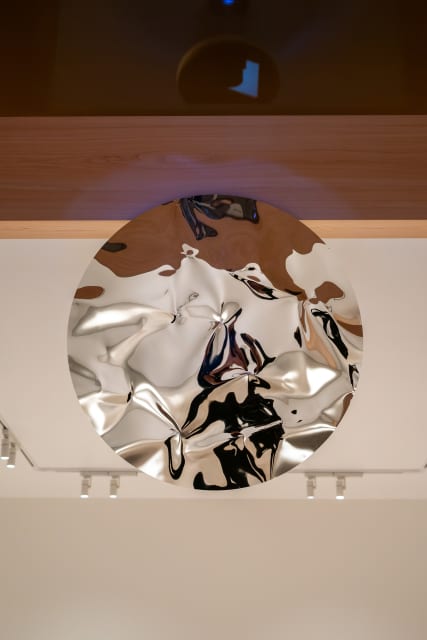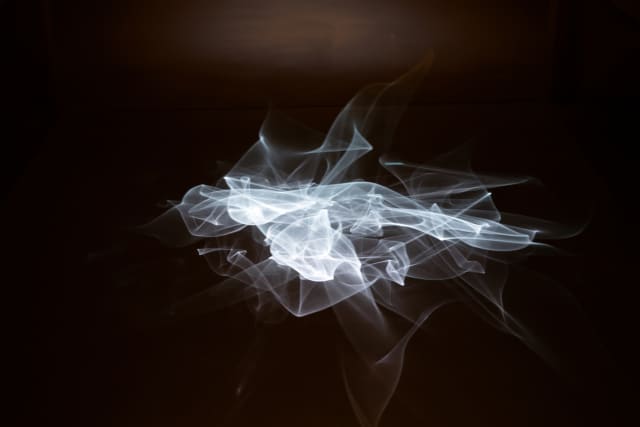1
of 8
Taking inspiration from the complex systems of lenses, filters, and mirrors used in cameras and film projectors, The nowhere garden transforms the tsubo-niwa ¬– or small atrium garden – of a historic house in Gion, Kyoto, into a complex optical device. A single beam of light projected from a specially designed laser cascades across a series of mirrors down from the top level to the ground floor in a meandering journey that highlights a different reflective element at each level. As the viewer moves through the installation, it is as if they were travelling through a camera or projector, their bodies tracing the path of the light.
The work extends on two of the levels into the rooms that adjoin the tsubo-niwa. A patterned mirror on the second floor allows light to stream into the space from the tsubo-niwa. A viewer who examines this mirror closely will notice that the reflective material presents an exquisite five-fold-symmetrical pattern that communicates order and complexity at once. On the first floor, a geometric sculpture mounted to the back of a rotating circular mirror casts speckles of light onto the surrounding room. Resembling a complex metal flower, the sculpture is a cluster of optical devices akin to kaleidoscopes.
The final element – a wavy revolving mirror that is hung at an angle – redirects the light onto a recessed rectangular spot on the floor below. Within this rectangle, arabesques of light move slowly and evolve as the mirror rotates above.
| Artwork details | |
Title |
The nowhere garden |
Year |
2024 |
Materials |
Stainless steel mirror, faded mirror, kaleidosphere, spotlight, motors |
